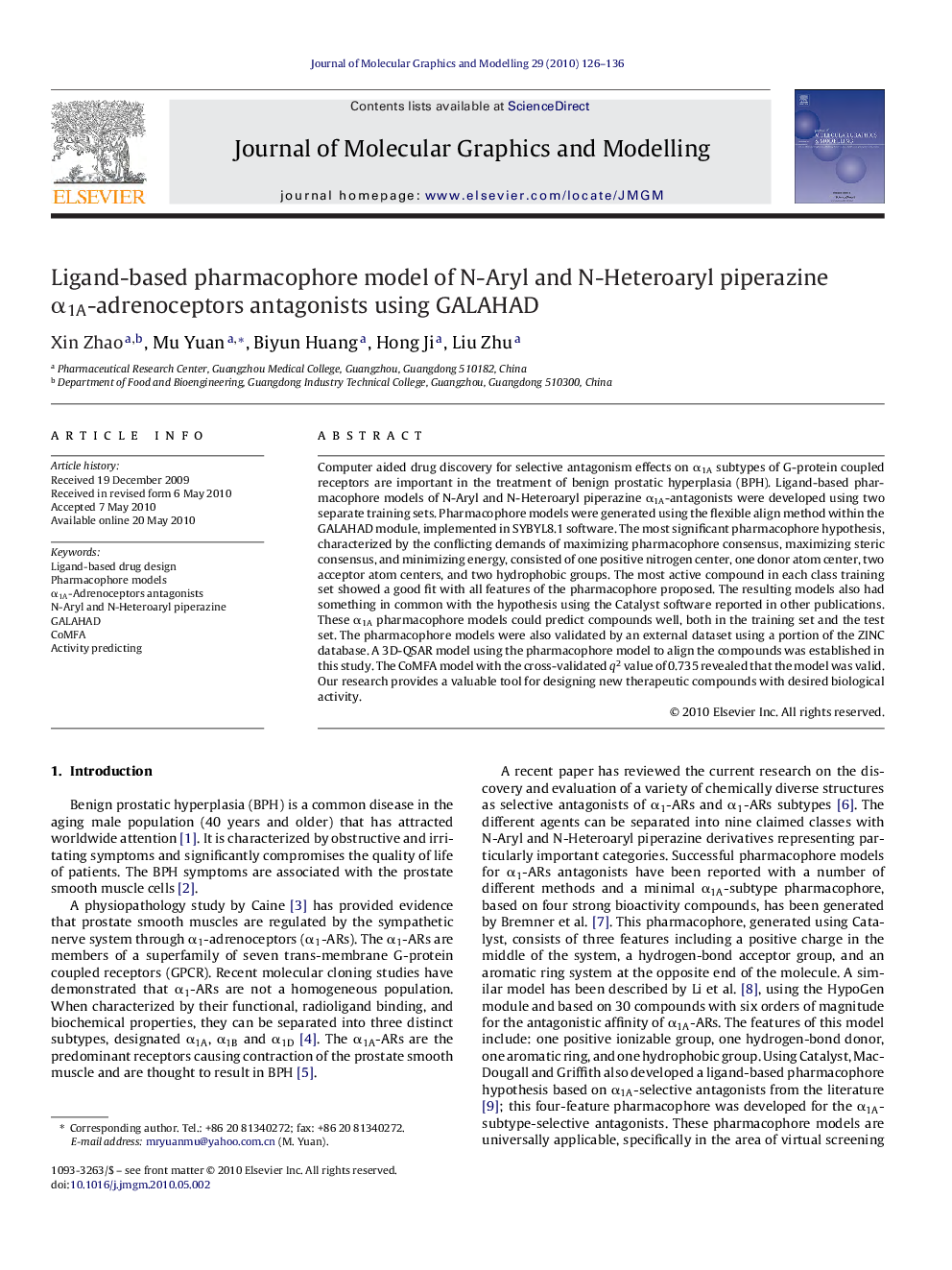| Article ID | Journal | Published Year | Pages | File Type |
|---|---|---|---|---|
| 442923 | Journal of Molecular Graphics and Modelling | 2010 | 11 Pages |
Computer aided drug discovery for selective antagonism effects on α1A subtypes of G-protein coupled receptors are important in the treatment of benign prostatic hyperplasia (BPH). Ligand-based pharmacophore models of N-Aryl and N-Heteroaryl piperazine α1A-antagonists were developed using two separate training sets. Pharmacophore models were generated using the flexible align method within the GALAHAD module, implemented in SYBYL8.1 software. The most significant pharmacophore hypothesis, characterized by the conflicting demands of maximizing pharmacophore consensus, maximizing steric consensus, and minimizing energy, consisted of one positive nitrogen center, one donor atom center, two acceptor atom centers, and two hydrophobic groups. The most active compound in each class training set showed a good fit with all features of the pharmacophore proposed. The resulting models also had something in common with the hypothesis using the Catalyst software reported in other publications. These α1A pharmacophore models could predict compounds well, both in the training set and the test set. The pharmacophore models were also validated by an external dataset using a portion of the ZINC database. A 3D-QSAR model using the pharmacophore model to align the compounds was established in this study. The CoMFA model with the cross-validated q2 value of 0.735 revealed that the model was valid. Our research provides a valuable tool for designing new therapeutic compounds with desired biological activity.
